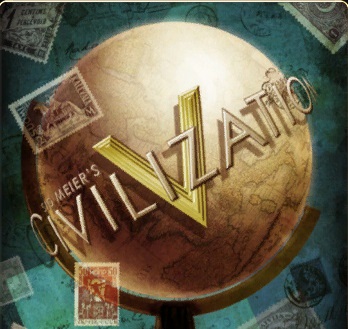Civilization V: Brave New World’s Buckets of Adaptation
Civilization V, the latest in the longtime strategy gaming series, was designed with a modern board game style approach: fewer individual pieces to play with than previous entries in the series, and a central focus on accumulation of resources at the overall empire level. Players use the output from the series’ trademark cities to fill up various resource “buckets”–in the base game, there’s one for your educational development, one for your economy, and one for your civic development and progress. The first expansion, Gods and Kings, added an additional resource and mechanic (Faith and Religion) that you could invest in to get more of the other resources. Once you fill your buckets, you empty them for shiny rewards that help you fill your next set of buckets faster. Victory is achieved when you fill a specific bucket to a victory condition. This is somewhat of a simplification, of course, but chasing and filling buckets for rewards has largely defined the series proper for decades.
Longtime fans and critics alike have hounded Civilization V since release for the games’s mechanical and deterministic style of play. In my view, Civilization V isn’t notably worse than previous entries in the series, but it does have the problem of an essential stability in its gameplay. The various events and actions the game places on the player are largely insufficient to force changes in strategy. The most popular way that modern strategy games introduce variability to fight this kind of determinism–when they even bother addressing it at all–is to incorporate large-scale simulation elements or introduce even greater randomness through random events out of the player’s control. The former results in complex systems that produce difficult-to-understand results; the latter, frustrating, game-ending cruelty that’s inappropriate for a game hoping to reach a wide audience. So with the latest expansion, Civilization V: Brave New World, developer Firaxis took a look at their safe and familiar buckets and asked themselves: is there a way to force meaningful opportunities for strategy adaptation onto our players that is harmonious to our core Civilization V design?
Enter board games. The challenge of strategy game design is that filling up buckets alone really is as boring as that sounds. But for a board game, resource accumulation design works well because board games are highly interactive experiences. A player simply can’t just set up a long-term strategy and expect to execute it hours later without other players interfering. Players are forced to interact with their rival players, and these interactions force adaptation of both players’ strategies.
Traditional PC strategy games, most often played by a single player against AI opponents, don’t have this luxury of innate player interactivity. The strategy game has to provide not just AI routines that respond to player behavior, but a wide gamut of potential interactions that the player cannot see or control. The goal is the same–force players to adapt to events generated by AI decisions or game systems, and prevent players from developing an unchanging, durable strategy that lets them cruise through the remainder of the game. If you’ve ever had a strategy game boil down to doing the same thing over and over again–even if that thing is just clicking next turn–you know how boring that situation can be.
Civilization V has always been an exceptional game, but has long missed the mark when it comes to introducing events that force players to adapt their strategies. The axes of interaction that the game forces on the player are very predictable, and the same in every game: war-oriented AI will try to conquer you, and less aggressive AIs will do little past the game’s initial land grab phase. Less warlike AIs are basically a player timer–a timer that can be raced, extended, or eliminated, usually through warfare. With proper planning, the player can mostly set their strategy on autopilot a third to halfway through the game. This turned the second half of Civilization V games into very mechanical low-level tests, where players answered questions like “Did you properly specialize this cit?y” or “Did you optimally build units to mass upgrade for a timing push?” A higher-level strategy game would demand of the player, “Is what you planned to do still going to work?”
This is where the newest Civilization V expansion, Brave New World, really shines and sets itself apart from previous Civilization games. In fact, with the inclusion of Brave New World, Civilization V is probably the best Civilization game ever made. Brave New World focuses on throwing curveballs at the player from the mid-point onward. It gleefully tears down any carefully constructed world state that the player might hope to ride until the end of the game with minimal adaptation.
For example, the new ideology system divides the existing nations into World War II/Cold War-style blocks of similarly aligned nations: Fascist, Communist, and Democratic. The player might be able to get along with AIs from another block for a period of time, but the AI friend is likely to start a war with the other block, putting you awkwardly in the middle. In the resulting fallout, players will likely have to betray or go to war with one friend or another. Brave New World adds the World Congress, a new feature that can cause players huge headaches. Losing a key vote can cripple a player’s chosen strategy in one fell swoop. Huge amounts of resources that would otherwise be used in executing a static victory strategy now must go into ensuring that the World Congress votes favorably. Fail to do so, and the player may just flat out lose.

The World Congress is difficult to control and influence, especially early on, when its decisions have a longer-lasting impact.
The best new endgame interaction the player faces in Brave New World is cultural pressure from divergent ideologies. This war of ideas is played out through an entirely new bucket: Tourism. Tourism only finds its relevance late in the game, when it is used to directly attack players’ endgame victory execution. Players can no longer simply “beat the timer” on weaker Civilizations; left unchecked, they can now cause huge problems due to cultural pressure, dramatically cutting the player’s overall resource output and forcing the player to commit resources towards unglamorous cultural defense efforts. The mechanic is wrapped in a delightful layer of flavor, coming off as a Cold War-style ideological struggle.
Brave New World’s forced adaptation mechanisms are a largely new addition to the Civilization series. They attack the player on axes of interaction that can’t reliably be raced and can’t easily be addressed with the shooty end of a artillery barrel. These kind of mechanics work well in creating unstable game states where players are forced to play strategically, and do so in complete coherence to Civilization V’s fundamental resource accumulation design–its many buckets.
We need more strategy games where “better, faster, stronger” player execution is weighted as evenly as the player’s ability to adapt to unexpected changes in game state. Tearing down plans may be tough for some players to swallow, but the chance to reforge something new and awesome out the rubble is a truly remarkable opportunity.







